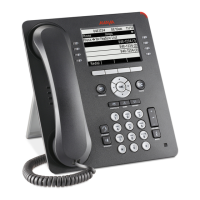or the Root File System is not corrupted, the system transfers control to a process in that
file system. If that file system is corrupted, the boot program checks the other Kernel/Root
File System. If that file system is not corrupted, the file system is marked as the one to be
activated. The system then sets the value of RFSINUSE to the name of the Signed Kernel
or Root Software Package that was used to install that file system, and the control is
transferred to the Signed Kernel or Root Software Package. If both Kernel and Root File
Systems are corrupted, the system halts the processing. The software checks whether a
Signed Application or Library Software Package has been previously downloaded. If the
system finds the Application Software Package or the Library Software Package the
Application Software Package or the Library Software Package is installed. If either the
Application Software Package or the Library Software Package has a different file name
than the currently installed version, the system replaces the existing corresponding files in
the Application File System. The system then deletes the downloaded Signed Application
or Library Software Package. If a new Signed Application or Library Software Package is
not found, the integrity of the application files is checked. If the files are corrupted, the
system installs the files from the Backup Package, replacing the corrupted files in the
Application File System. Each time an Application Software Package or a Library Software
Package is installed, the system sets the value of the persistent parameter APPINUSE to
the file name of the Application Software Package that was installed. If the application files
are not corrupted, or after the Backup Package has been installed, control is transferred to
the application installed in the Application File System. While the system loads the
application files into volatile memory and transfers control is transferred to the application
files, the bottom text line shows the value of the APPINUSE parameter.
3. The system starts and sets the internal clock/calendar is set to 0:00:00 Saturday, January
1, 2000.
4. The phone activates the Ethernet line interface , the PC Ethernet jack, and dial pad input to
allow the start of procedures. The activation occurs soon after power-up or a reset.
The phone displays the speed of the Ethernet interface in Mbps, that is, 10, 100, or 1000.
The phone then displays the message No Ethernet * to program until the software
determines whether the interface is 10 Mbps, 100 Mbps, or 1000 Mbps.
Note:
The Ethernet speed is the LAN interface speed for both the phone and any attached
computer, if the administrator has not disabled the latter interface by a PHY2STAT
setting.
Important:
When you press the star (*) after the system displays a * to program message. The
initialization process can support an interrupt that invokes the Craft Access entry
procedure to allow manual settings, only if the local dialpad procedure status
(PROCSTAT) system value is 0. The zero PROCSTAT value provides full access to
local procedures. If PROCSTAT is 1 the Craft Access entry procedure can be invoked
only when a * to program message displays, but only the VIEW procedure is
available.
Installing the Deskphone
March 2018 Installing and Maintaining Avaya 9608/9608G/9611G/9621G/9641G/9641GS IP
Deskphones H.323 30
Comments on this document? infodev@avaya.com

